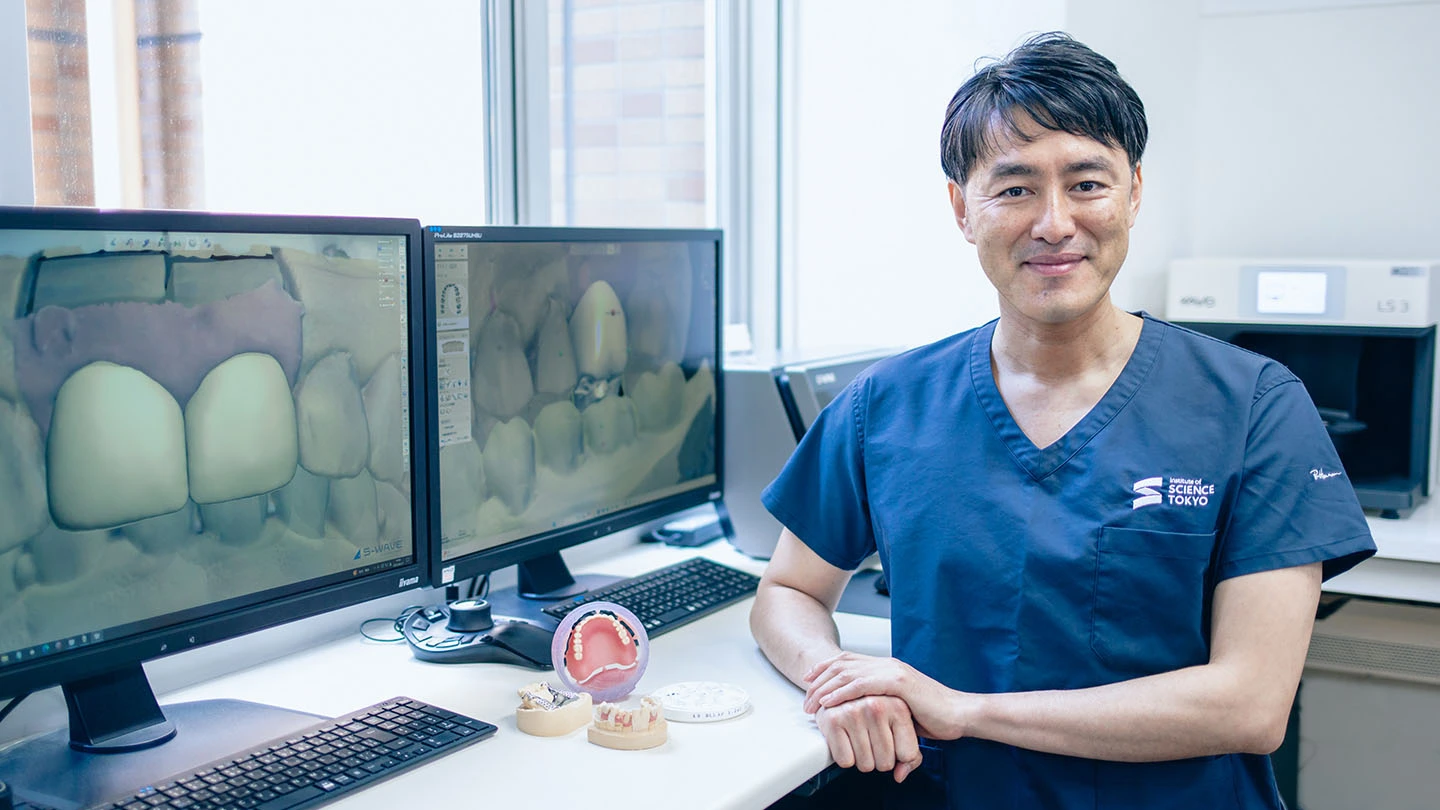
As the world's first super-aged society, Japan is uniquely positioned to pioneer solutions for age-related healthcare challenges, establishing itself as a leader in dental science. Advancing this field, Professor Manabu Kanazawa from the Department of Gerodontology and Oral Rehabilitation has developed a revolutionary digital method for fabricating high-quality dentures that address the growing needs of aging populations worldwide. Since 2023, Institute of Science Tokyo Hospital* has been implementing Kanazawa's digital denture technology in clinical practice to provide patients with complete dentures, while conducting research on partial dentures. Beyond clinical applications, Kanazawa and his team are preparing to launch a university-based start-up company to scale these initiatives across Japan and globally through technology transfer, while simultaneously integrating digital innovations into dental education to train the next generation of dental specialists.
*With the merger of Tokyo Medical and Dental University and Tokyo Institute of Technology in October 2024, Tokyo Medical and Dental University Hospital has been renamed Institute of Science Tokyo Hospital.
Providing digital complete dentures at Science Tokyo Hospital
As people age, tooth loss becomes more common. As Japan's 8020 Campaign (which encourages people to keep at least 20 of their original teeth at age 80) has spread in recent years, more people have been able to maintain their teeth. However, as the aging population grows, the overall number of people with 19 or fewer teeth is also increasing. The percentage of edentulous people - those without any natural teeth - has even reached 4% in Japan. Most of them are over the age of 60, and the average age of edentulous patients visiting Science Tokyo Hospital is 75.
"Complete dentures are used in cases of edentulous jaw, and 36% of people aged 85 and over wear them. However, fabricating complete dentures requires highly advanced skills, so until now, dental technicians have only been able to fabricate one set per day. Basically, temporary dentures (wax dentures) are fabricated by placing artificial teeth in wax to confirm the fit, and then replaced with pink plastic resin dentures. This entire process is done by hand," Kanazawa explains.
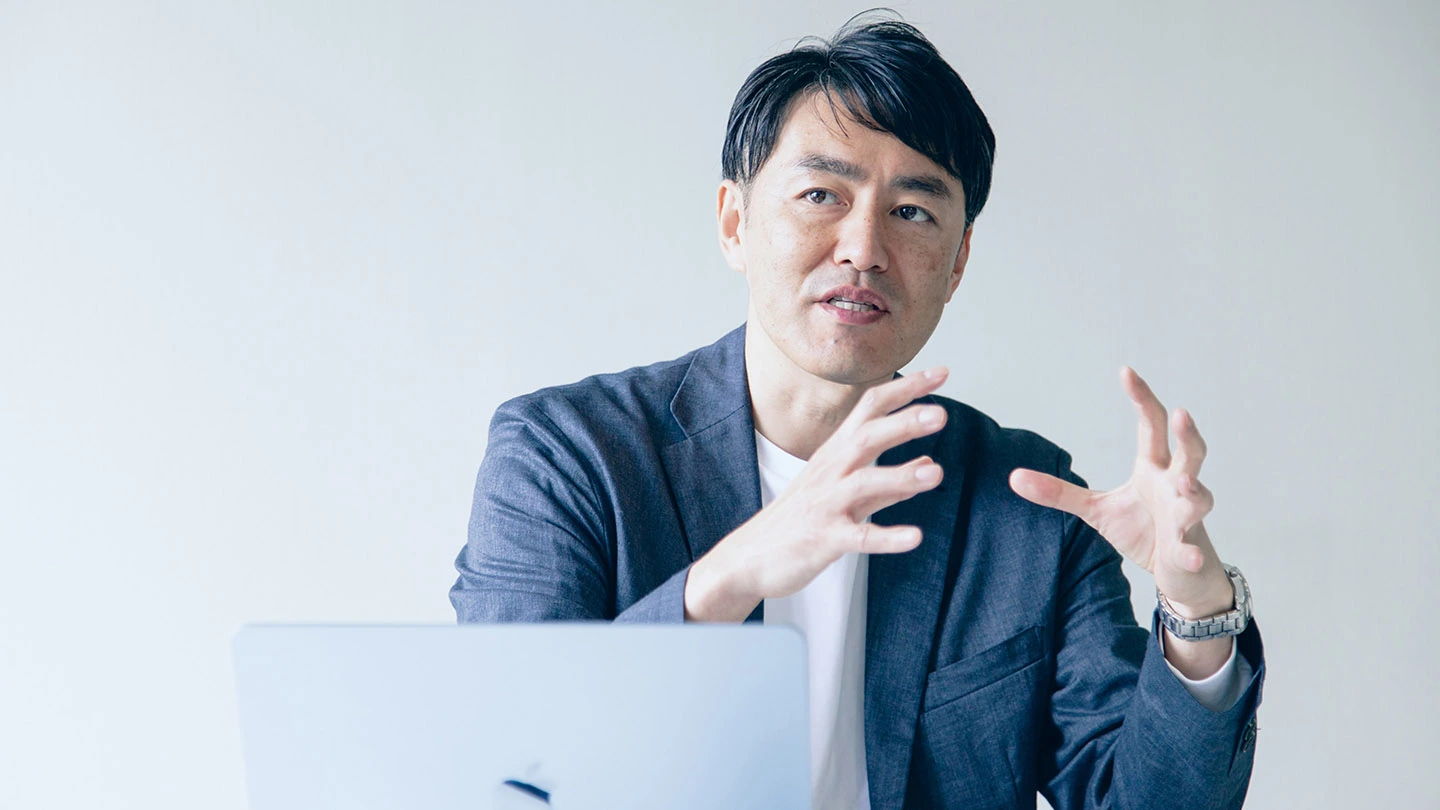
Kanazawa first focused on digitalizing the process in 2008, aiming to improve denture quality while streamlining these analog methods. In 2011, he published his original research findings titled "Trial of a CAD/CAM system for fabricating complete dentures" in an international journal. A patent was obtained in Japan and the US based on "Technology for handling dental prosthesis design and manufacture as data using CAD/CAM, and finally milling based on that data with NC (numerical control) machine tools using custom disks." The treatment using artificial materials to replace missing or damaged teeth or jaw parts is referred to as "prosthetics," and prostheses include dentures and dental crowns.
After optimizing the equipment and software, Science Tokyo Hospital began offering digital complete dentures as a medical treatment not covered by insurance beginning in 2023. So far, around 20 patients have benefited from this unique "digital denture" technology.
High precision, excellent bonding, and aesthetic appearance
The fabrication of complete dentures through cutting (milling) using custom disks follows these steps. First, a mold is made of the patient's gums, and the outer frame of the denture is created using 3D printing. Next, artificial teeth are bonded to this frame, and the resin that forms the denture base is injected and polymerized* under heat and pressure to produce a custom-made polymethylmethacrylate (PMMA) disk for each patient. This disk is then placed in a milling machine (a small dental cutting device) and processed to fabricate the complete denture, with the artificial teeth attached to the denture base.
*Polymerization: A chemical reaction in which many low-molecular-weight compounds (monomers), the basic units of polymers, bond together to form a polymer.
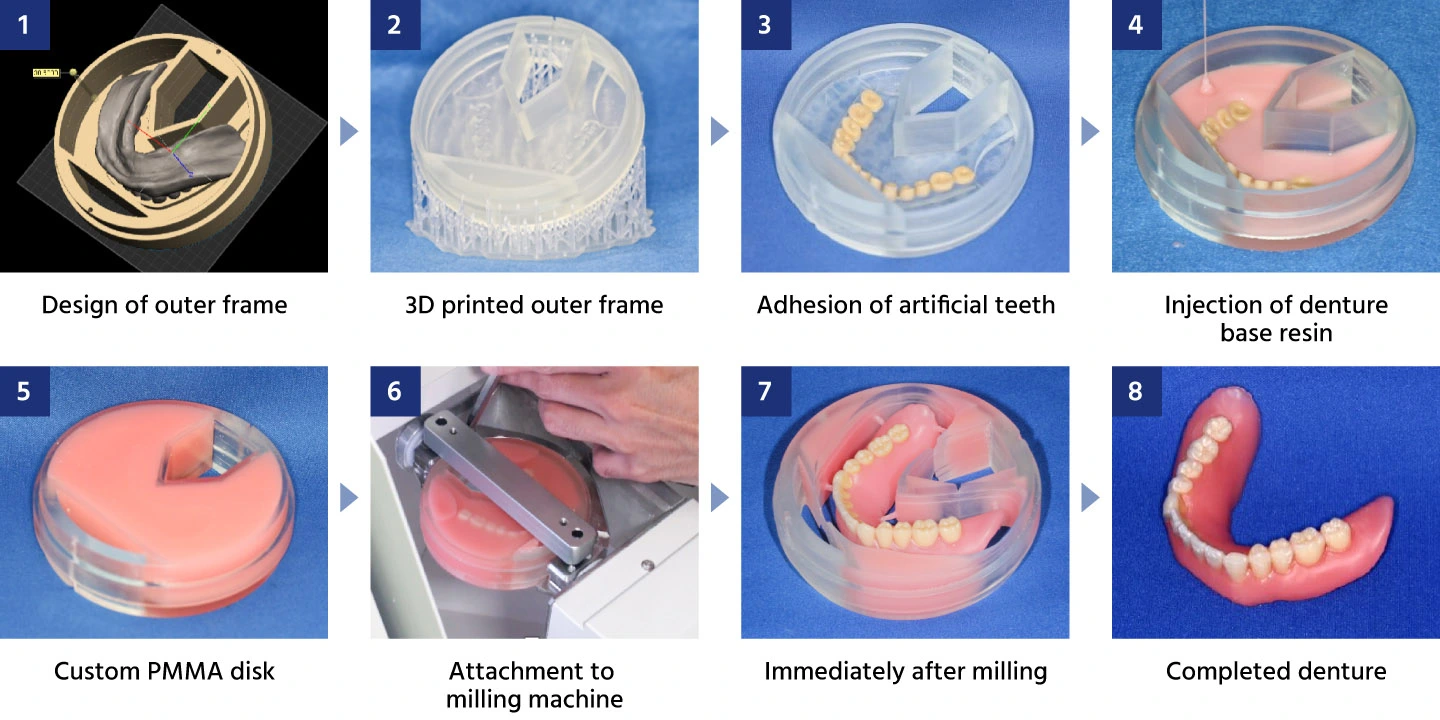
Soeda Y, Kanazawa M, Arakida T, Iwaki M, Minakuchi S.
CAD-CAM milled complete dentures with custom disks and prefabricated artificial teeth: A dental technique.
J Prosthet Dent. 2022 Jan;127(1):55-58.
Kanazawa states, "Digital dentures do not mean you can just press a button and be finished. We have managed to establish a method based on the accumulation of detailed parameters and skills, such as CAD know-how for computer-aided design and the speed and thickness of material lamination via digital printing."
The digital dentures developed by Kanazawa offer many advantages. First, the mucosal surface of the denture is highly accurate. With conventional techniques, in which plastic is injected into a mold and solidified, contraction occurs during solidification, reducing the accuracy of the fit. Digital dentures also exhibit exceptionally high bond strength between the artificial teeth and the denture base. In addition, the use of die cutting in the cutting process reduces material waste. It also shortens the time required to create an occlusal surface that matches each patient's individual jaw movements.
While mass-produced artificial teeth can be used with the denture base, Kanazawa pursues a more aesthetic appearance by reproducing the three-layer coloring of real teeth - pulp, dentin, and enamel - rather than using a single color. "I didn't start off with the goal of using digital technology, but my pursuit of homogenized, high-quality dentures naturally went in this direction. The advantages are higher quality dentures that can be made faster and cheaper."
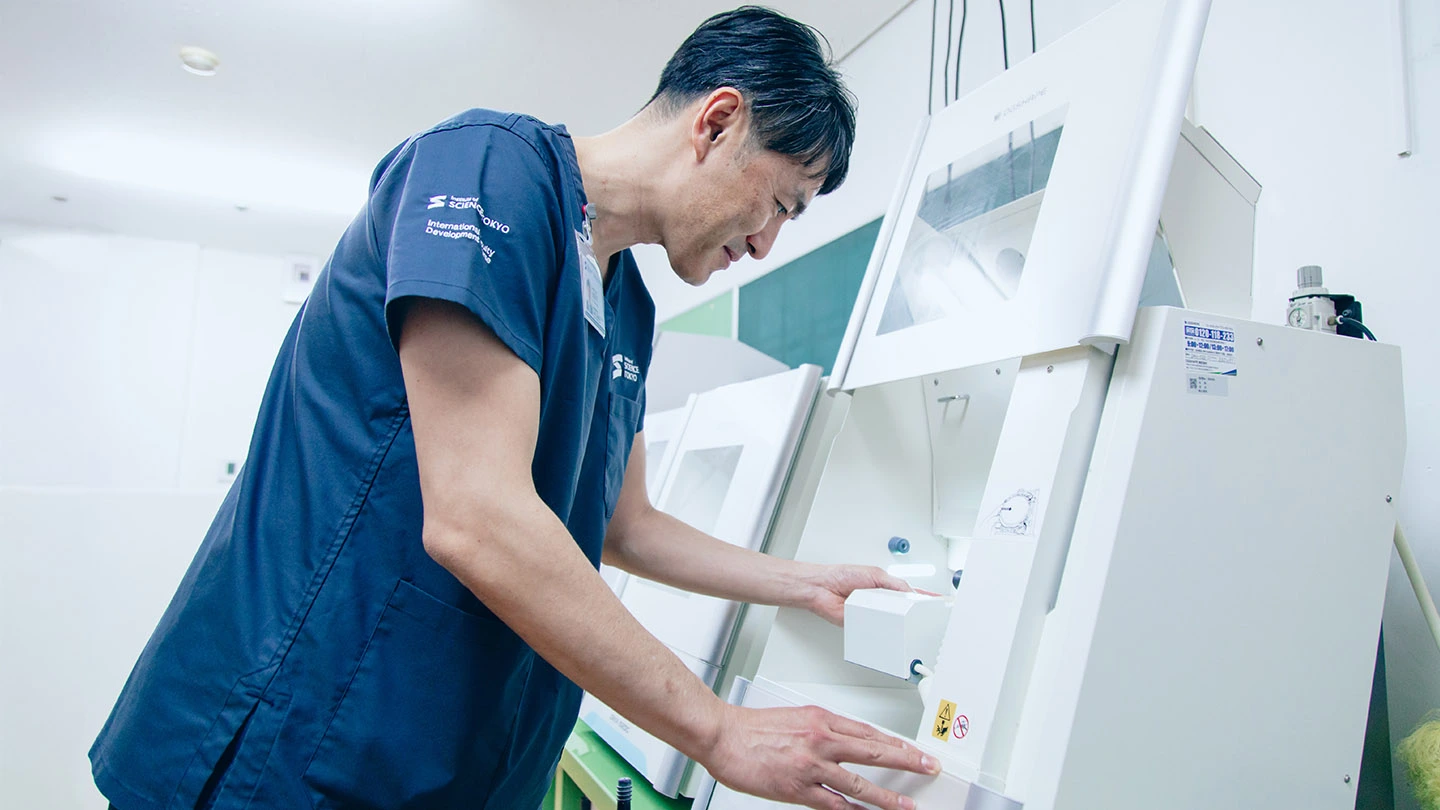
If the goal were simply to digitalize the denture fabrication process, it would be possible to use 3D printers to make them cheaply. However, 3D-printed dentures lack durability and quality. Kanazawa positions the digital dentures fabricated using his method as the "highest-grade dentures" and, for the time being, plans to offer them as a treatment not covered by insurance. He is also considering expanding overseas, and since dentures are often not covered by insurance in other countries, he expects them to spread faster than in Japan.
Launch of a start-up company for expansion across Japan
With Japan's declining birthrate and aging population, the working-age population is shrinking, making it important to pursue efficiency. Not only is there a shortage of dental technicians, but each technician can typically produce only one complete denture per day. However, with digital dentures, it becomes possible to fabricate several in a single day. Such digital dentures require a system for delivering them to people across Japan who want them - not just fabricating and providing them to patients at Science Tokyo Hospital.
This technique, which originated in Kanazawa's laboratory, has been passed on to the Dental Laboratory of Science Tokyo Hospital, where dental technicians are now using it. To help digital dentures become more widespread in Japan, Kanazawa is considering providing technical training for fabricating digital dentures and having dental clinics throughout Japan provide digital dentures fabricated by certified fabricators. A start-up company originating from Institute of Science Tokyo, tentatively named Science Tokyo Digital Dental Lab, is planned as the basis for expanding such services. Public funds for the startup have been secured through funding from the Tokyo Metropolitan Government and the M&D fund, which is primarily sponsored by Science Tokyo (targeting researchers in medical and dental sciences). With a prospect of securing additional funding, Kanazawa aims to establish the company in 2027, and the transfer of the digital denture technology will begin prior to this. He is considering expanding not only within Japan but also globally.
In 2018, the Real Mode Studio was established at the Dental Laboratory of Science Tokyo Hospital. By utilizing the latest digital equipment available there, it has become possible to quickly fabricate high-quality ceramic crowns (artificial crown-type teeth) and dental implants, enabling a stable supply and evaluations to ensure safe structural designs, which were both difficult to achieve with conventional methods. The digitally managed data can be converted into realistic intraoral devices that are both functional and aesthetic, making the studio fully operational as a fabrication center.
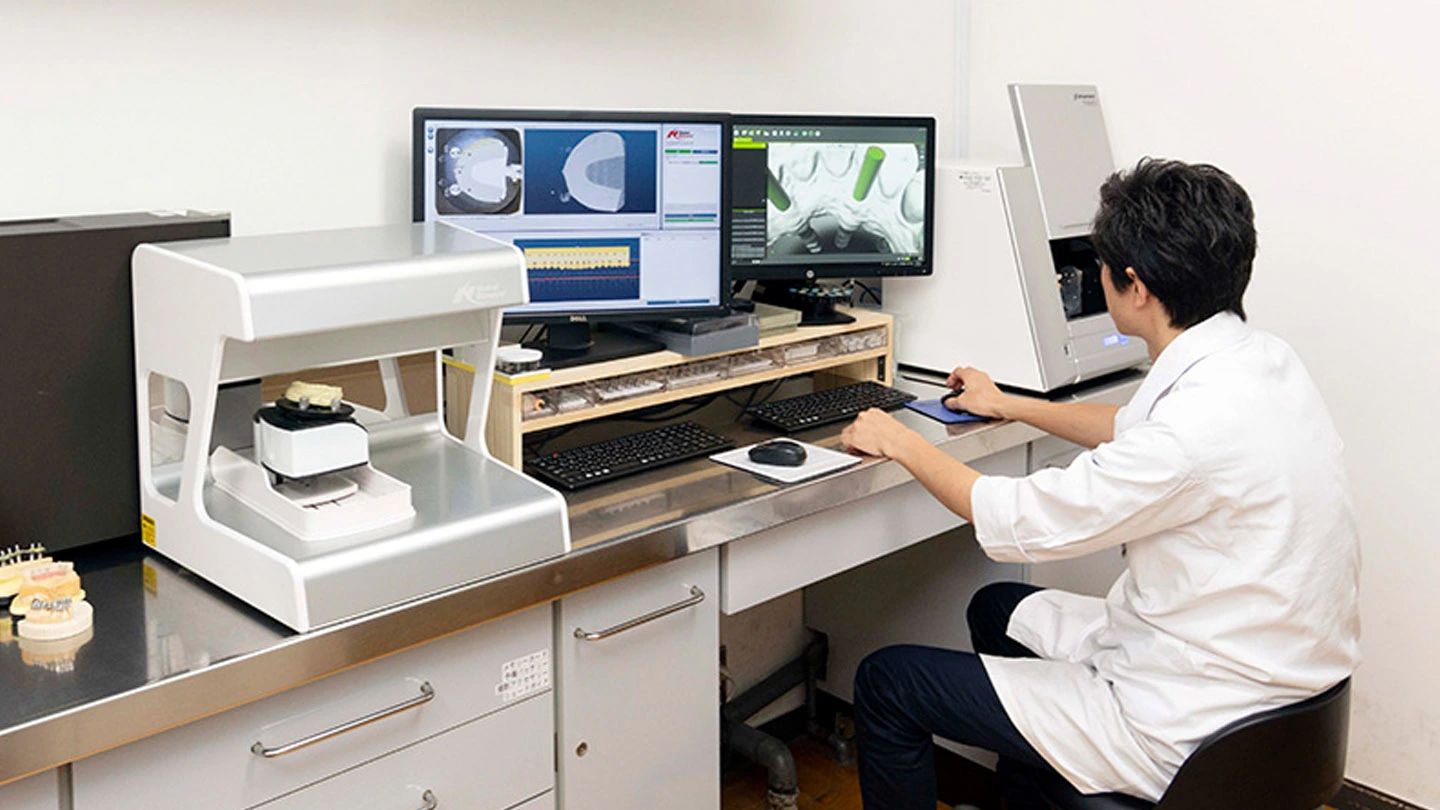
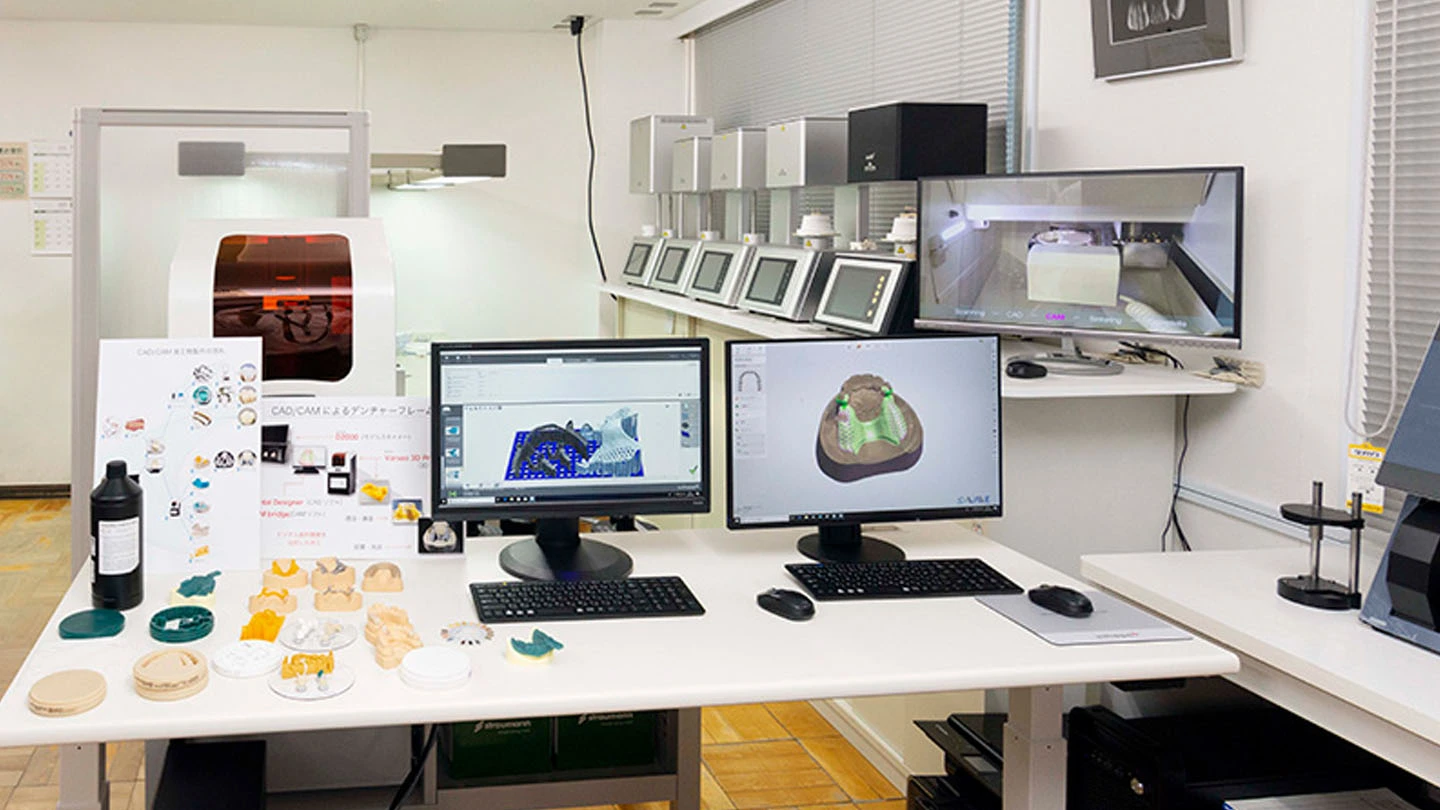
Figure 2: Real Mode Studio established at the hospital
"I developed this digital denture technology for fabricating complete dentures, which is the most difficult. Now, the technology to apply this to the fabrication of partial dentures has been established and is currently undergoing clinical research with the goal of being used in actual treatment," explains Kanazawa. Demand for partial dentures is significantly higher than for complete dentures, and expectations for digitalization are increasing.
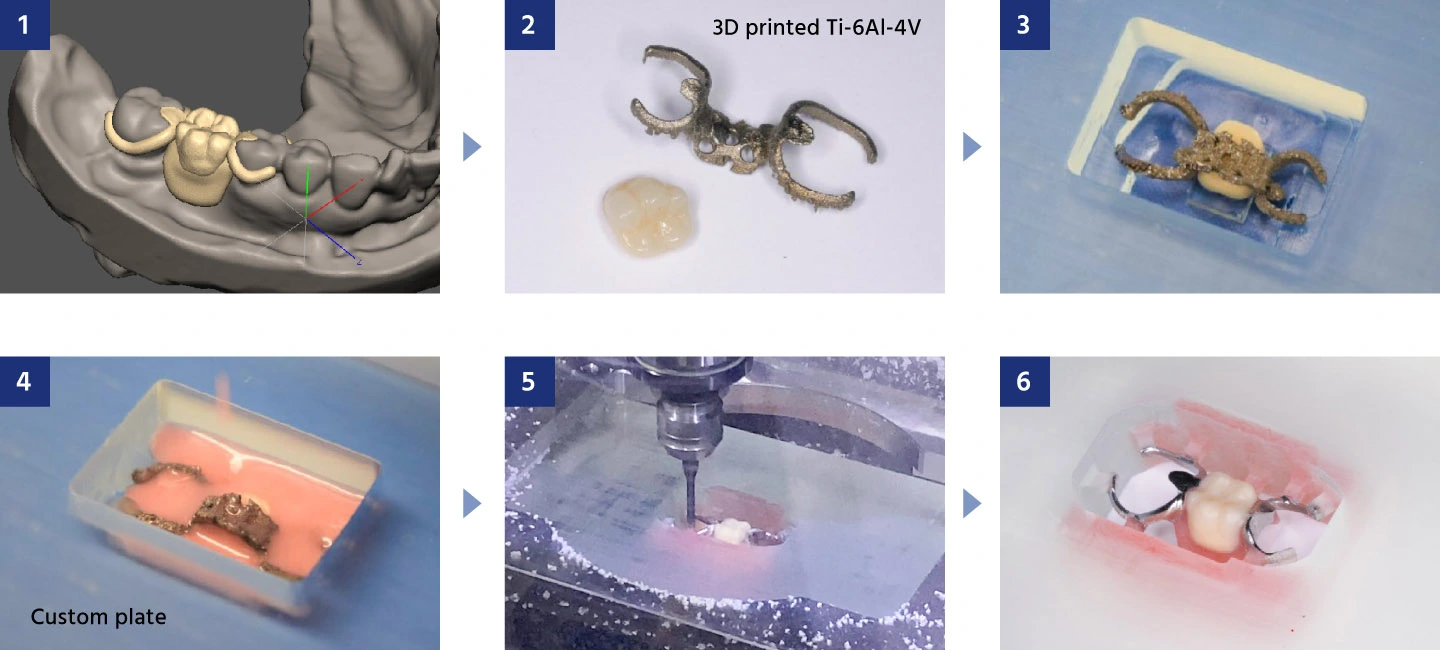
Akiyama Y, Kanazawa M, Iwaki M, Hada T, Soeda Y, Otake R, Kashiwazaki K, Komagamine Y, Murakami N, Takaichi A, Wakabayashi N, Minakuchi S.
Fabrication of milled removable partial dentures using a custom plate with prefabricated artificial teeth.
J Prosthodont Res. 2023 Feb 2.
The fulfillment of helping others maintain their ability to "eat and speak"
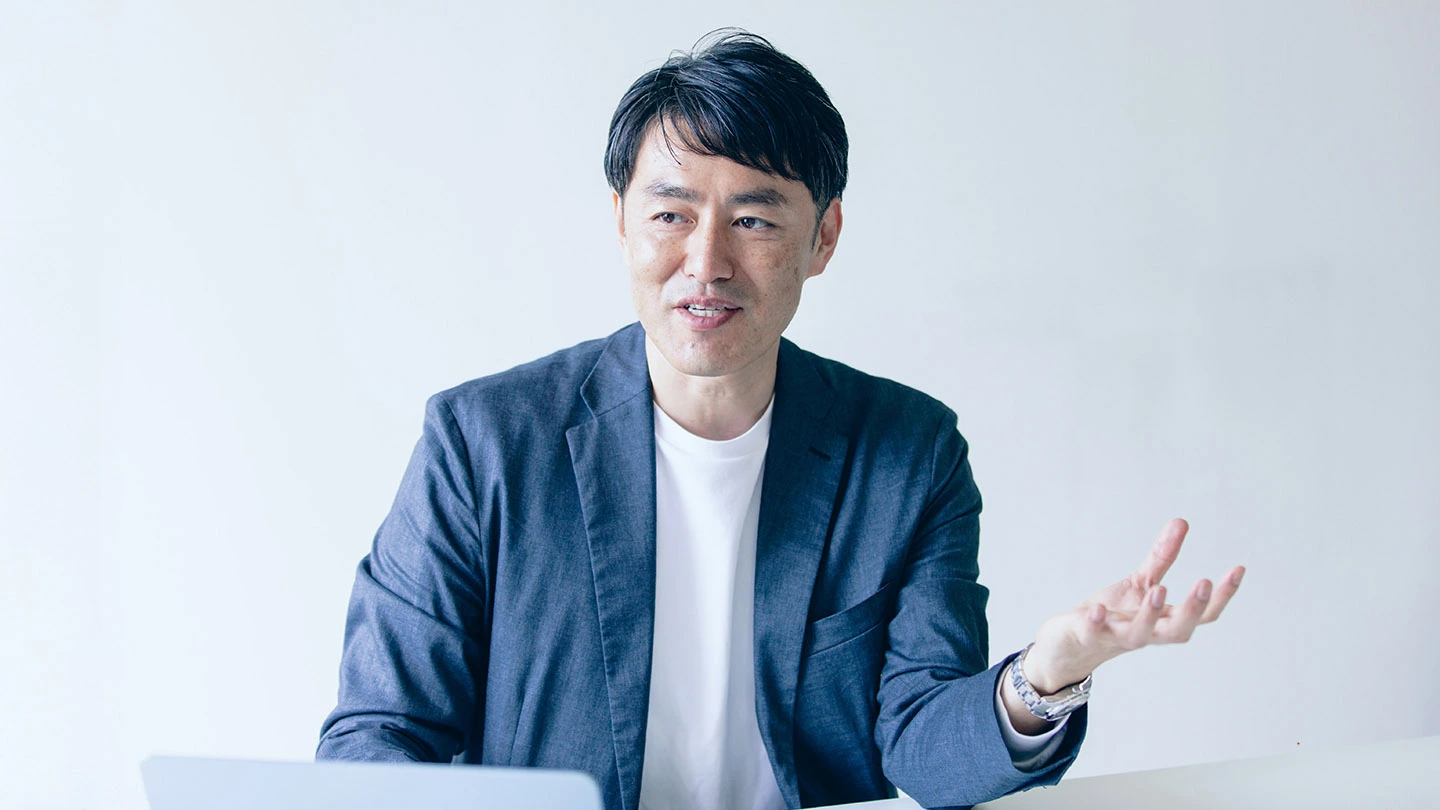
When he was young, Kanazawa's dream was to become an astronaut or pilot. Although he did not have cavities, he needed a dentist's help to correct his teeth alignment. The treatment was painful, yet he felt much better afterward, which inspired him to become a dentist. He also says that his love of detailed handwork, such as handicrafts, has been an advantage in his work as a dentist.
Kanazawa enjoyed making dentures and dental crowns. Although digitalization had become widespread, he hadn't learned skills like programming while in the Faculty of Dentistry, so he taught himself. In 2002, he advanced to graduate school and became interested in manufacturing, even attending exhibitions about machine tools unrelated to healthcare. Combining milling machines with other equipment to make them more compact led to a breakthrough in digital denture technology.
When lost teeth are replaced by dental prostheses, the person is able to chew and speak immediately afterward. If missing teeth are left as is, the jawbone becomes thinner. But, when teeth are maintained, the facial structure remains sharp, which also improves issues with appearance. Hearing expressions of appreciation day after day, such as 'I was able to go out to eat with my grandchildren,' 'I'm no longer afraid to speak in front of people,' and 'My dentures stay in even when I breathe while swimming the front crawl,' is a source of encouragement for Kanazawa.
He describes the fulfillment he finds in his work, saying, "Restoring essential functions like eating and speaking, which are so important for daily life, and being appreciated for it makes this job truly enjoyable." He feels that, while manual dexterity remains important, advances in digitalization will reduce the impact of differences in manual skill, so he expects more people will be able to enter dentistry.
Preventing "oral frailty" to prolong healthy life expectancy
Since Japan is a super-aging society, its dental care is attracting worldwide attention. Back in 2016, Shunsuke Minakuchi (currently Professor Emeritus), who had been a professor at the Department of Gerodontology and Oral Rehabilitation, proposed the concept of "oral frailty," and since then oral hypofunction is recognized as a name of dental disease. Between being healthy and requiring nursing care, there is a stage called "frailty," during which muscular strength and mental and physical vitality decline. Similarly, in the dental field, oral frailty refers to the stage when tooth and oral functions decline. Kanazawa sets his goal as "preventing oral frailty and maintaining a longer healthy life expectancy."
In October 2024, Science Tokyo was established. Kanazawa expresses his ambition by saying, "In my field, collaboration with researchers in science and engineering is essential. Now that I can collaborate within Science Tokyo, I want to proactively take advantage of these opportunities to make progress."
At the Faculty of Dentistry, CAD and other digital technologies are being introduced into educational settings for students aspiring to become dentists, dental technicians, and dental hygienists, driving the advancement of digitalisation. For surgical training, the precise movements of an instructor's hand and handpiece (dental instrument used for cutting teeth) on the teeth and jawbone of an actual patient are displayed to the operator as a real-time 3D image. Using this image, the medical resident follows the instructor's movements with their hands to accurately acquire the skills.
As many countries face the challenges of aging populations and fewer births, progress in digital dental technology is opening up new possibilities for more accessible and future-ready healthcare for all.
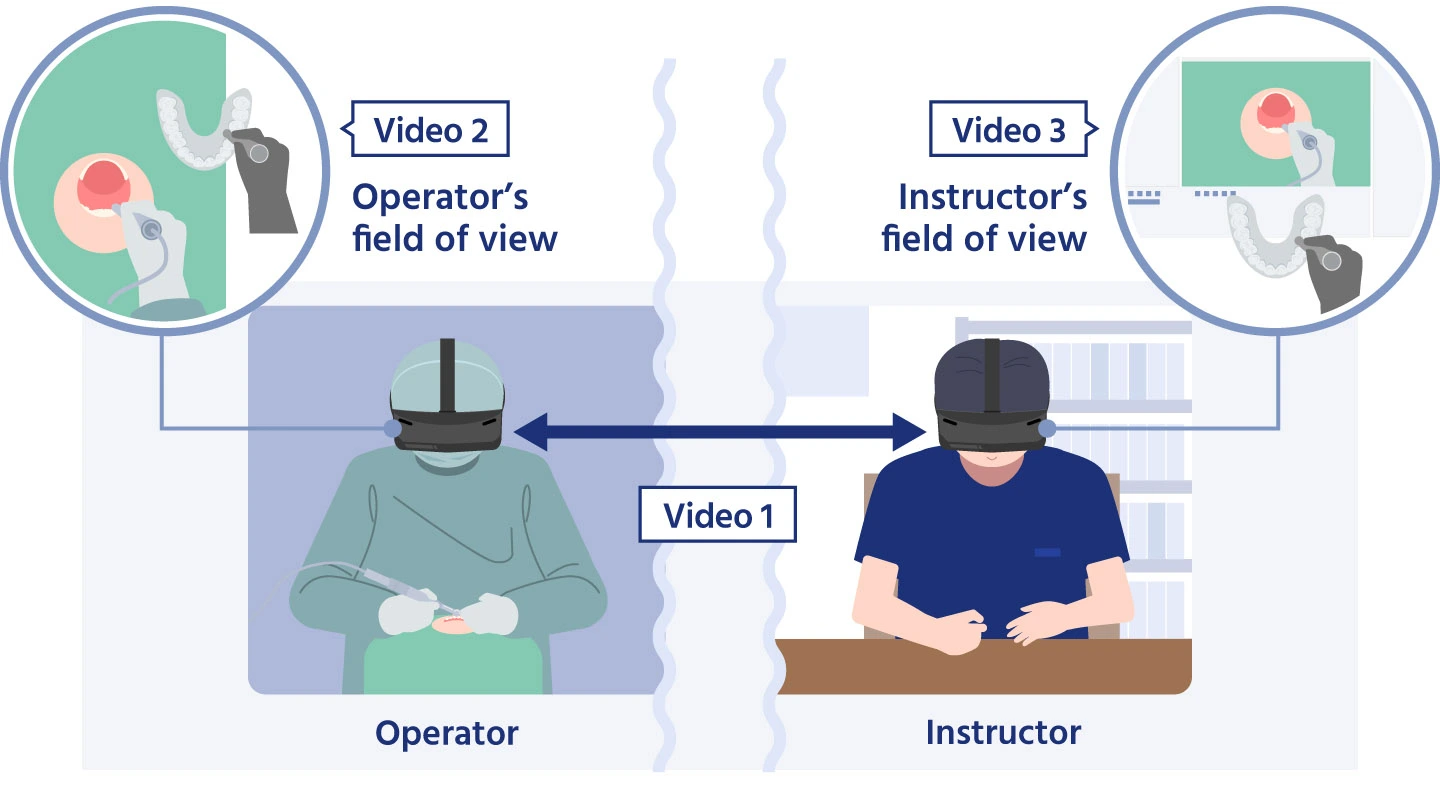
The instructor can remotely instruct the operator on hand and handpiece movements.
Profile
Manabu Kanazawa
Professor, Department of Gerodontology and Oral Rehabilitation, Graduate School of Medical and Dental Sciences
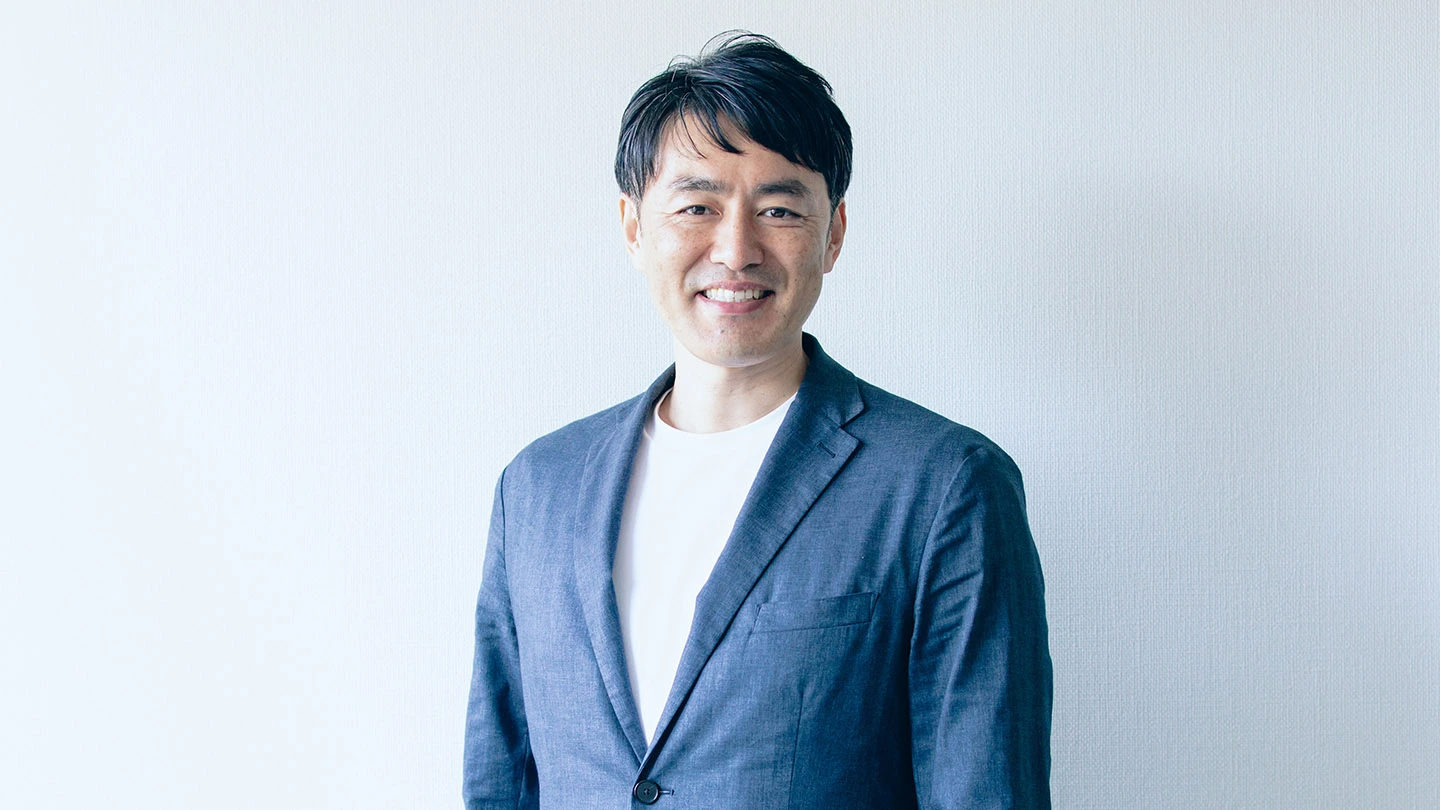
- October 2024 to present
- Professor, Department of Gerodontology and Oral Rehabilitation, Graduate School of Medical and Dental Sciences, Institute of Science Tokyo
- May 2024
- Professor, Department of Gerodontology and Oral Rehabilitation, Graduate School of Medical and Dental Sciences, Tokyo Medical and Dental University
- April 2023 to present
- Visiting Guest Professor at University of Zurich, Switzerland
- May 2021
- Professor, Department of Digital Dentistry, Graduate School of Medical and Dental Sciences, Tokyo Medical and Dental University
- January 2020
- Lecturer, Department of Gerodontology and Oral Rehabilitation, Graduate School of Medical and Dental Sciences, Tokyo Medical and Dental University
- 2013 - 2014
- Visiting Professor at McGill University, Canada
- April 2008
- Assistant Professor, Department of Gerodontology and Oral Rehabilitation, Graduate School of Medical and Dental Sciences, Tokyo Medical and Dental University
- March 2006
- Completed doctoral studies in the Department of Complete Denture Prosthodontics, Graduate School of Medical and Dental Sciences, Tokyo Medical and Dental University
- April
- Dental Resident in Prosthodontics at the Dental Hospital, Tokyo Medical and Dental University
- March 2002
- Graduated from the Faculty of Dentistry, Tokyo Medical and Dental University






